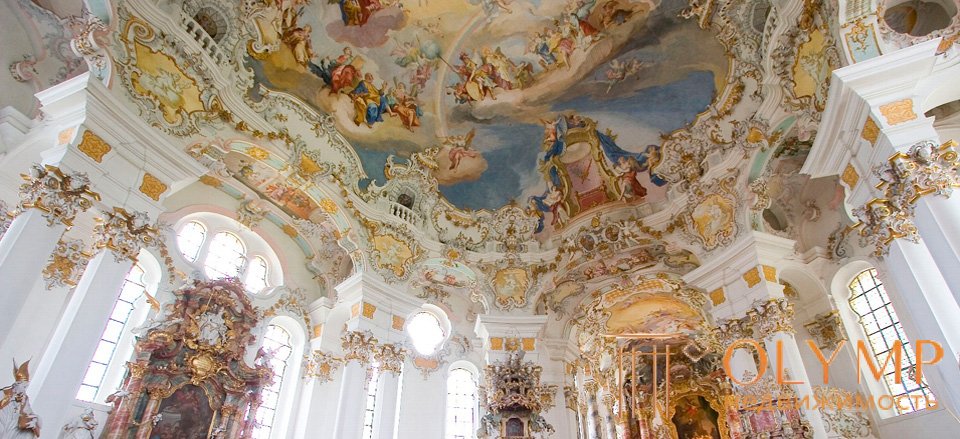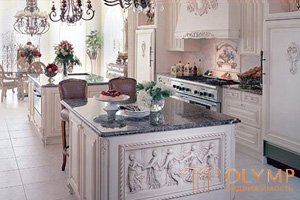

Rather rapid development of interior art in the XVIII century led to the frequent change of styles of interior decoration of houses. The simultaneous coexistence of three directions at once influenced the development of the rococo style. It was a logical conclusion of the Baroque and the beginning of classicism.
Rococo style orders are not used in the decoration. The only way to design the walls are panels and panels. As such, the cornice is often absent and is replaced by a thin weave. There is a tendency to merge the main plane of the wall with the overlying paduga, so that the wall imperceptibly passes into the ceiling.
Panels were processed with very small ornamentation. The ornament of the framing of wall panels, ceiling sockets, deduportov (naddvernik), door panels, frames, mirrors, most often symmetrical in construction, and sometimes asymmetric. It is based on the motifs of the acanthus leaf and its shoots, the shell, the sea wave, the stones generated by the surf, the trellis net; All these themes are highly stylized.
Sometimes Chinese motifs are woven into the ornament.
Mirrors are widely used.
To this it is necessary to add another very important factor - the specific color, which is based on a range of whitened, muffled, pale tones. The major, intense colors of the mature Baroque of the XVII century (Louis XIV style) are replaced by shades of pearl gray (gri de pearl), bluish (first blow), colors of crab meat (somon), pale ocher (beige) and others. White color is preferred. Gold is used for details not only "hot", but also cold greenish shades, sometimes frosted. As before, special attention is paid to silver. All this applies to furniture and crafts.
The main signs of Rococo "lightness, grace, small-scale, transfer of the main emphasis in the design on the ornament, for the most part strongly stylized, wavy outlines of objects" spread to furniture and other types of the objective world.
The furniture at this time, first of all chairs, armchairs, decreases in the dimensions: backs gradually decrease, legs and armrests become thinner, seats extend also. The legs go organically into the seat frame, prologues disappear. All parts of furniture are endowed with fine carvings in the form of flowers, sinks, stylized ornament. Wooden parts are gilded or covered with paint "background in one color, carving another.
In the forms of beds is also observed sufficient diversity. The canopy is preserved, but sometimes it is attached not to the columns, but to the ceiling, and is not structurally associated with the bed.
Tapestries, as before, occupy a prominent place in the decoration of interiors.

Что бы оставить комментарий войдите
Комментарии (0)